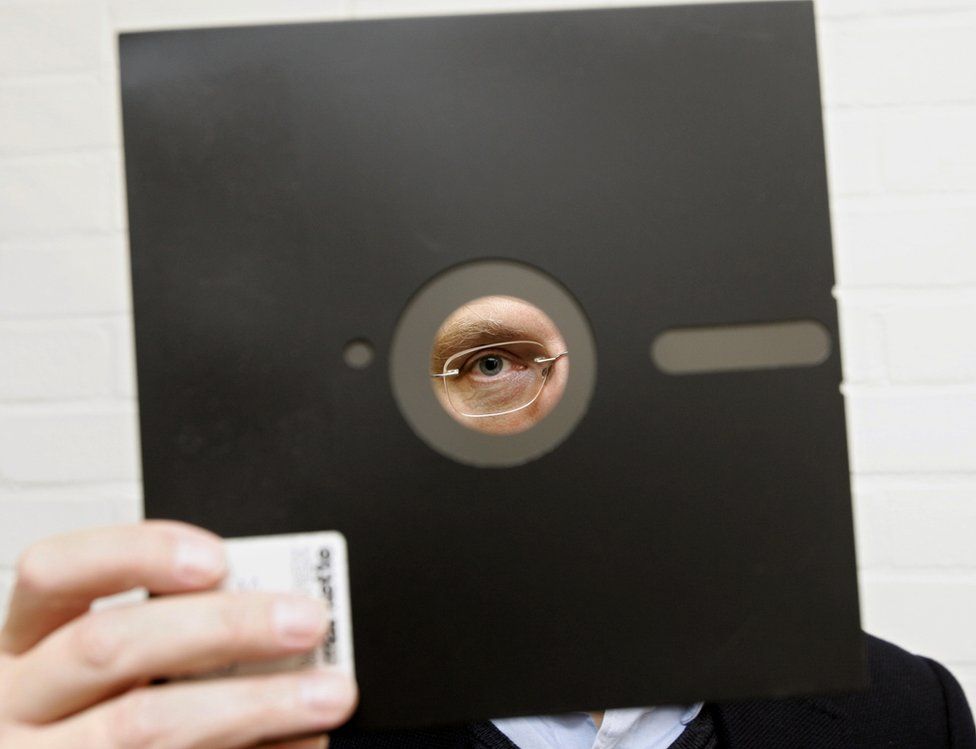US nuclear force still uses floppy disks
- Published

The US nuclear weapons force still uses a 1970s-era computer system and 8-inch floppy disks, a government report has revealed.
The Government Accountability Office said the Pentagon was one of several departments where "legacy systems" urgently needed to be replaced.
The report said taxpayers spent $61bn (£41bn) a year on maintaining ageing technologies.
It said that was three times more than the investment on modern IT systems.
The report said that the Department of Defence systems that co-ordinated intercontinental ballistic missiles, nuclear bombers and tanker support aircraft "runs on an IBM Series-1 Computer - a 1970s computing system - and uses eight-inch floppy disks".
"This system remains in use because, in short, it still works," Pentagon spokeswoman Lt Col Valerie Henderson told the AFP news agency.
The floppy disk - what is it?
- Also called diskette or disk, it became popular in the 1970s
- A standard 8in (200 mm) floppy disk had 237.25kB of storage space, enough for 15 seconds of audio
- You would need more than 130,000 8-inch floppy disks to store 32GB of information - the size of an average memory stick
- In the 1990s, the 3.5in floppy became the norm, with a 1.44MB of memory
- Dell stopped making computers with inbuilt floppy disks in 2003. Very few manufacturers still make them
- They are still in use in some 1990s technical equipment too valuable to scrap
"However, to address obsolescence concerns, the floppy drives are scheduled to be replaced with secure digital devices by the end of 2017."
She added: "Modernisation across the entire Nuclear Command, Control, and Communications enterprise remains ongoing."
The report said that the Pentagon was planning to fully replace the system by the end of 2020.
According to the report, the US treasury also needed to upgrade its systems, which it said was using "assembly language code - a computer language initially used in the 1950s and typically tied to the hardware for which it was developed".